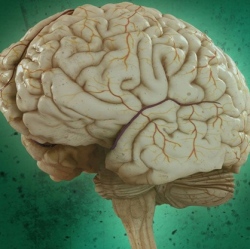
Benjamin Blencowe and his team have uncovered how a small change in a protein called PTBP1 can spur the creation of neurons, cells that make the brain, that could have fuelled the evolution of mammalian brains to become the largest and most complex among vertebrates. The study is published in the August 20 issue of Science.
Brain size and complexity vary enormously across vertebrates, but it is not clear how these differences came about. Humans and frogs, for example, have been evolving separately for 350 million years and have very different brain abilities. Yet scientists have shown that they use a remarkably similar repertoire of genes to build organs in the body.
So how is it that a similar number of genes, that are also switched on or off in similar ways in diverse vertebrate species, generate a vast range of organ size and complexity?
The key lays in the process that Blencowe’s group studies, known as alternative splicing (AS), whereby gene products are assembled into proteins, which are the building blocks of life. During AS, gene fragments, called exons, are shuffled to make different protein shapes. It’s like LEGO, where some fragments can be missing from the final protein shape.
AS enables cells to make more than one protein from a single gene, so that the total number of different proteins in a cell greatly surpasses the number of available genes. A cell’s ability to regulate protein diversity at any given time reflects its ability to take on different roles in the body. Blencowe’s previous work showed that AS prevalence increases with vertebrate complexity.
So although the genes that make bodies of vertebrates might be similar, the proteins they give rise to are far more diverse in animals such as mammals, than in birds and frogs. And nowhere is AS more widespread than in the brain.
"One interesting implication of our work is that this particular switch between the two versions of PTBP1 could have affected the timing of when neurons are made in the embryo in a way that creates differences in morphological complexity and brain size," says Blencowe, who is also a professor in the Department of Molecular Genetics.
As scientists continue to sift through countless molecular events occurring in our cells, they’ll keep finding clues as to how our bodies and minds came to be. "This is the tip of an iceberg in terms of the full repertoire of AS changes that likely have contributed major roles in driving evolutionary differences," says Blencowe.
